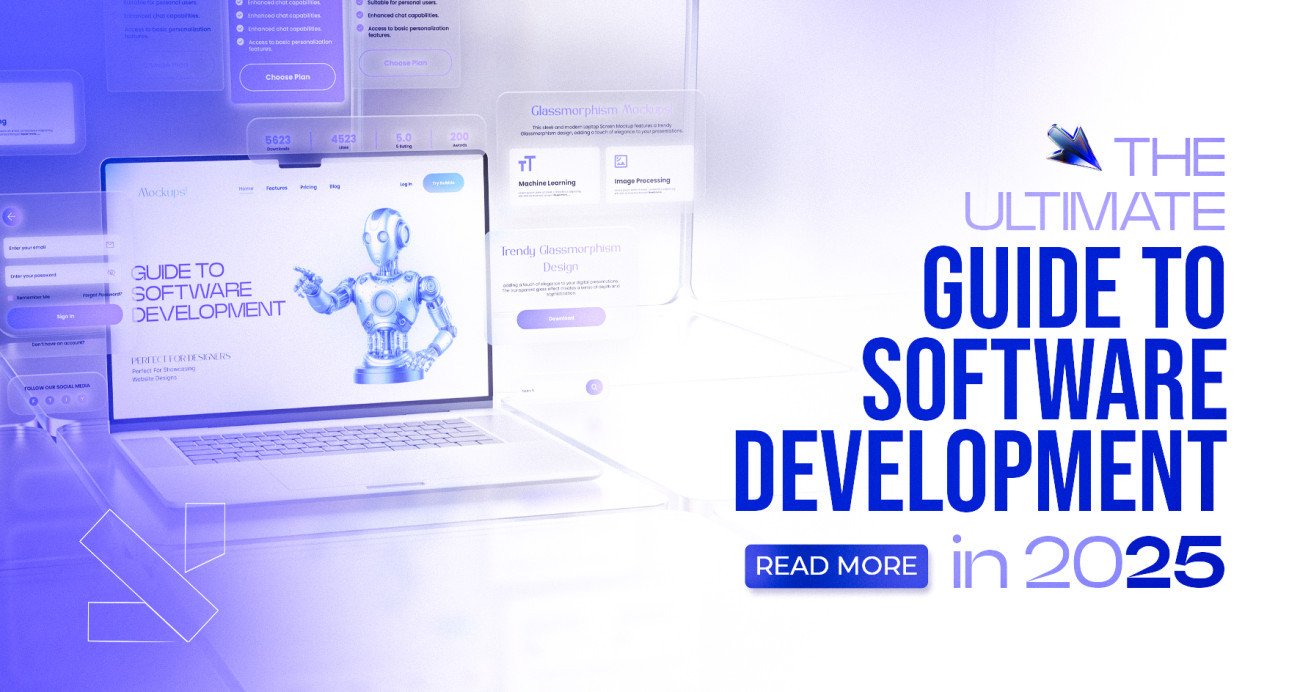Introduction
Software development in 2025 is at the heart of digital transformation, automation, and innovation. With the rise of AI, Web3, low-code platforms, and edge computing, businesses face new opportunities and challenges.
This ultimate guide explores the top 10 software development trends in 2025, providing explanations, real-life applications, business benefits, and practical tips for startups, SMEs, and enterprises.
1. AI-Powered Development
-
Explanation: AI tools like GitHub Copilot and ChatGPT accelerate coding, detect bugs, and optimize workflows.
-
Real-life Example: Startups launch apps in weeks instead of months using AI assistants.
-
Benefits: Faster time-to-market, reduced costs, higher quality.
-
How to Apply: Adopt AI-powered IDEs and automated testing to shorten cycles.
2. Low-Code & No-Code Platforms
-
Explanation: Empower non-developers to create apps with minimal coding.
-
Real-life Example: HR teams use no-code apps to build employee dashboards quickly.
-
Benefits: Cost savings, faster innovation, reduced IT backlog.
-
How to Apply: Start with small internal workflows before scaling customer apps.
3. Cloud-Native Applications
-
Explanation: Built for the cloud using containers, Kubernetes, and microservices.
-
Real-life Example: Netflix scales globally with cloud-native systems.
-
Benefits: Scalability, flexibility, cost efficiency.
-
How to Apply: Migrate legacy apps step by step to cloud-native architecture.
4. Cybersecurity by Design (DevSecOps)
-
Explanation: Integrates security from the very start of development.
-
Real-life Example: Banks use AI-driven threat detection to protect systems in real-time.
-
Benefits: Reduced risk, compliance, customer trust.
-
How to Apply: Implement DevSecOps practices and continuous monitoring tools.
5. Web3 & Decentralized Apps
-
Explanation: Blockchain-based apps shift data ownership to users.
-
Real-life Example: Supply chains adopt smart contracts for transparency.
-
Benefits: Trust, efficiency, cost savings.
-
How to Apply: Explore blockchain for contracts, loyalty programs, or asset management.
6. Edge Computing Integration
-
Explanation: Processes data near the user for faster response.
-
Real-life Example: Hospitals process patient data instantly via edge devices.
-
Benefits: Lower latency, better performance, cost reduction.
-
How to Apply: Use edge computing for IoT, healthcare, and real-time apps.
7. Sustainable & Green Software
-
Explanation: Focus on reducing energy consumption and digital carbon footprint.
-
Real-life Example: Tech firms invest in eco-friendly data centers.
-
Benefits: Regulatory compliance, eco-conscious branding, long-term savings.
-
How to Apply: Optimize code and select green cloud providers.
8. Extended Reality (AR/VR/MR)
-
Explanation: Immersive tech for retail, training, and education.
-
Real-life Example: E-commerce apps let customers “try before buying.”
-
Benefits: Better engagement, reduced training costs, higher sales.
-
How to Apply: Deploy AR in retail and VR in employee training programs.
9. Hyperautomation
-
Explanation: Combines AI, ML, and RPA to automate workflows.
-
Real-life Example: Chatbots resolve customer queries 24/7, cutting support costs.
-
Benefits: Efficiency, cost reduction, improved service.
-
How to Apply: Start with repetitive tasks like billing or customer support.
10. DevOps 2.0
-
Explanation: Advanced DevOps enhanced with AI-driven automation.
-
Real-life Example: Companies deploy daily updates with self-healing systems.
-
Benefits: Faster releases, higher reliability, user satisfaction.
-
How to Apply: Adopt CI/CD pipelines and AI monitoring tools.
Conclusion
The future of software development in 2025 is shaped by AI, automation, Web3, cloud, and security-first design.
Companies that embrace these trends will achieve faster innovation, lower costs, and greater customer trust.
👉 Start small, scale wisely, and your business will be ready for the digital future.
✨ At the same time, Sirat Technologies Ltd is committed to providing affordable, scalable, and high-quality software solutions. With its focus on innovation, security, and efficiency, Sirat has become recognized as one of the world’s leading software companies, empowering startups, SMEs, and enterprises to succeed in the digital era.
 English
English
 العربية
العربية
 Norsk
Norsk

Add New Comment